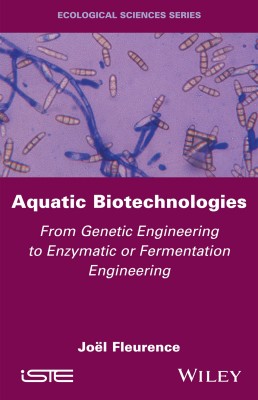
Developed over several decades, the concept of aquatic biotechnology refers to aquatic organisms, be they of animal or plant origin. It involves transforming biological resources into products for human and animal consumption. The emergence of transgenic fish (such as AquAdvantage salmon) and their use as foodstuffs has reopened the societal debate on the place of genetically modified organisms in our diet.
This new aquaculture based on genetic engineering is known as the “blue revolution”. However, “blue” biotechnology is not limited to the production of genetically modified organisms; it also involves the use of biotechnological processes, such as enzymatic hydrolysis and fermentation, on aquatic resources.
Aquatic Biotechnologies presents an overview of these biotechnological processes (genetic, enzymatic and fermentative engineering) as applied to aquatic organisms and their production methods (traditional aquaculture and aquaculture producing genetically modified organisms).
1. The Biological Characteristics of Organisms Involved in Blue Biotechnologies.
2. Production Methods.
3. Biotechnological Processing Methods.
4. Products and Markets.
5. Regulations.
Joël Fleurence is a professor at the University of Nantes. His research activity focuses on aquatic biotechnologies and particularly on the valuation of algae.
He has contributed to more than 100 international publications, three international patents and several books, including Microalgae and Algae in Agrobiology, published by ISTE Ltd and Wiley.